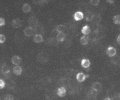
cd-02
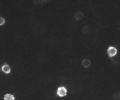
cd-08
Cell 1
Cell 2
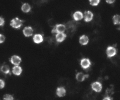
cd-03
------
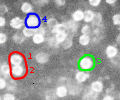
superposition
Cell 3
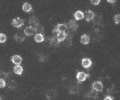
cd-04
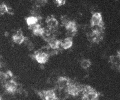
hla-dr
Cell 4
In our collaboration, multi parameter flourescence microscopy data of immunoflourescently labeled lymphocytes has to be analysed. One experimental data set consists of $n$ intensity images of the sample. As a result of a specific immunolabeling technique in each image different subsets of the lymphocytes appear with high intensity values, expressing the existence of a specific cell surface protein. Because the positions of the cells are not affected by the labeling process, the $n$ flourescence signals of a cell can be traced through the image stack at constant coordinates.
The analysis of such stacks of images by an expert user is limited to two strategies in most laboratories: the images are analyzed one after the other or up to three images are written into the RGB channels of a color map. Obviously, these techniques are not suitable for the analysis of higher dimensional data.
Here, Sonification of the stack of images allows to perceive the complete
pattern of {\em all} markers.
The biomedical expert may probe specific cells on an auditory map \cite{Bla94}
and listen to their flourescence patterns.
The sonification was designed to satisfy specific requirements:

cd-02 |

cd-08 |
Identical patterns:
Cell 1 Cell 2 |
|

cd-03 |
------ |

superposition |
Similar pattern:
Cell 3 |

cd-04 |

hla-dr |
Very different pattern:
Cell 4 |
A specific advantage of this method is, that it allows to examine the
high-dimensional data vectors without the need to change the viewing direction.
However, there are many other methods to present such data acoustically,
e.g. by using different timbre classes for the markers, like percussive
instruments, fluid sounds, musical instruments or the human voice. These
alternatives and their applicability are currently investigated.